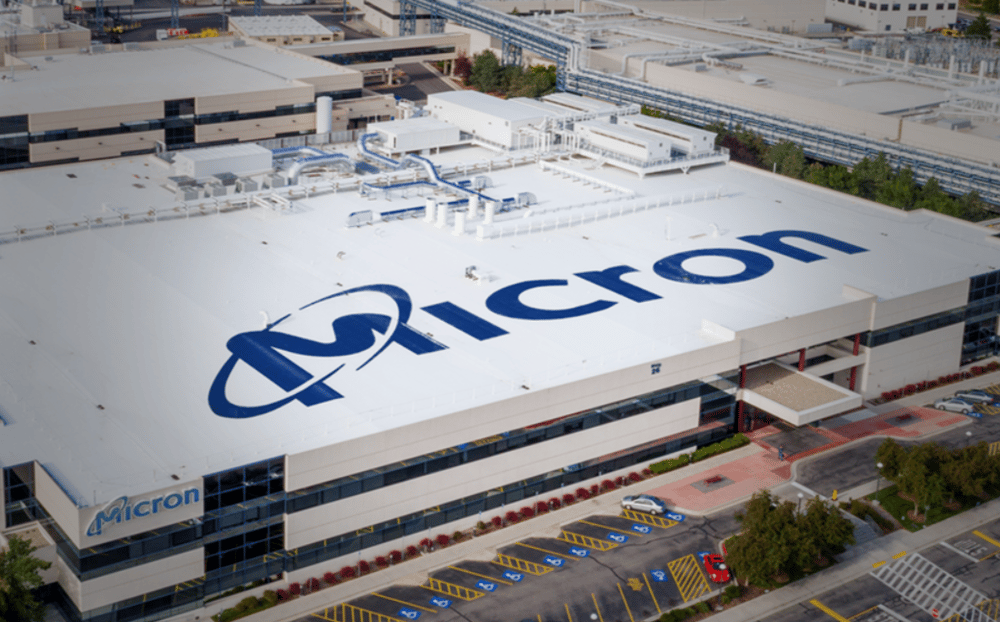Micron Technology Expands U.S. Semiconductor Investment
Micron Technology Inc. $MU, one of the world’s largest memory chipmakers, announced a substantial increase in its domestic capital expenditure plans. The firm now intends to invest a total of $200 billion USD in U.S.-based operations, including an additional $30 billion to bolster semiconductor manufacturing. This escalation aligns with renewed White House initiatives to repatriate critical tech supply chains and reassert U.S. leadership in semiconductor production, a cornerstone of both economic security and technological sovereignty.
The investment expansion coincides with political momentum favoring industrial onshoring, amid a climate of geopolitical uncertainty, supply chain disruptions, and U.S.-China tech tensions. The announcement also follows calls from former President Donald Trump to ramp up domestic production of strategic components, particularly chips, which are critical to defense, consumer electronics, and AI applications.
Micron's Capital Strategy and Its Broader Implications
Micron’s decision to scale its domestic footprint reflects a deeper trend toward regionalization of semiconductor fabrication. With over $150 billion earmarked specifically for U.S. manufacturing, the move is a direct response to federal incentives under the CHIPS and Science Act, which aims to reduce reliance on East Asian foundries.
This repositioning reinforces the role of the USD in funding tech infrastructure and underscores private sector commitment to U.S. economic re-industrialization. However, the market reaction was cautious: shares of Micron Technology fell nearly 1% in premarket trading, reflecting investor concerns about capital efficiency and potential margin pressures from such a massive outlay.

Quick Facts
🏭 Total Planned Investment: $200 billion USD
💰 Additional Investment Announced: $30 billion USD
🇺🇸 Manufacturing Allocation: $150 billion for U.S. fabs
📉 Stock Impact: MU shares down ~1% premarket
📍 Policy Context: U.S. push for chip supply chain onshoring under Trump-era and ongoing industrial strategy
🧠 Industry: Semiconductor memory and fabrication
Market Response and Sector Sentiment
Analysts view Micron's announcement as a high-stakes wager on long-term U.S. chip demand, especially amid intensifying competition from Samsung Electronics, SK Hynix $000660.KS , and TSMC $TSM. While supportive of national resilience strategies, investors are divided on the near-term return on such capex-heavy initiatives.
Wall Street’s lukewarm initial response suggests concern over whether global memory chip pricing—historically cyclical—can justify the scale of investment. However, policy alignment with national industrial goals may provide hedging mechanisms, such as tax credits, grants, and preferential procurement.

Key Points
Micron Technology’s expanded U.S. investment raises total commitment to $200 billion.
Manufacturing expansion aligns with Washington’s reshoring agenda and semiconductor nationalism.
Stock dip reflects market concerns about profitability and capital discipline.
Leverages CHIPS Act subsidies and USD-backed infrastructure incentives.
Reinforces bifurcation in global chip supply chains between U.S.-led and China-aligned ecosystems.
Industrial Realignment and Long-Term Strategy
Micron’s expanded commitment represents not just a corporate investment, but a geopolitical signal. It aligns with broader U.S. goals to secure technological independence and insulate supply chains from global shocks. Although short-term investor sentiment appears cautious, the long-term implications—greater national semiconductor capacity, enhanced employment, and a strengthened tech-industrial base—are strategically transformative.
The decision underscores a shift from global efficiency to national resilience, positioning Micron as both a market player and a policy-aligned industrial partner in reshaping the USD-dominated semiconductor value chain.















Comments
Redefining automation now sets the stage for next-generation intelligent systems